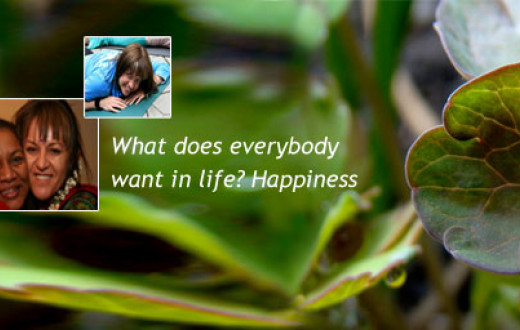The festival of Navratri is celebrated with prayers and gaiety at the beginning of the Ashwin (autumn) and the beginning of Chaitra (spring), months according to the Hindu calendar. Chaitra also marks the beginning of the year, according to the Hindu tradition. During these times when everything in nature has set the tone for a new beginning, the festival of Navratri is a time to refresh our minds too.
A victory over our negative tendencies
Every day, we pick a million reasons to get stressed. Anger for the work gone wrong, anxiety for the future, feverishness for our ambitions: all these burn us slowly and sometimes, swiftly. Navratri gives us an opportunity to rejuvenate our minds from all the accumulated negativity and stress.
The rejuvenation process begins with an inward journey that involves fasting, praying, being in silence, meditating and soaking oneself in Vedic chants. Fasting detoxifies the body, silence purifies the speech and brings rest to the chattering mind while meditation and Vedic chants take one deep into one's own being, increasing the prana or the life force within us, thus subduing our negative tendencies.
The victory of the Devi over the demons: A deeper meaning
According to legend, the Divine Mother or Devi killed the demons, Mahishasur, Shumbha-Nishumbha, Madhu - Kaitabh, Raktabeejasura, Chanda-Munda and Dhoomralochan. All these demons symbolize qualities within us that pull us down. For instance, Mahishasur symbolizes inertia, Shumbha-Nishumbha pride and shame, Madhu-Kaitabh extreme forms of cravings and aversions, and Rakhtabeejasura obsessions. During Navratri, the divine consciousness or Devi energy overpowers all these qualities.
The journey to the Self through the three gunas
While the result of an inward journey during Navratri is one that everyone desires, the journey becomes unpredictable due to an imbalance of the gunas. Three qualities or gunas that govern our daily life, dominate the environment and the mind-body complex at different times. An imbalance in the gunas does not let us reach the state of equanimity and the rest we seek. Here is a glimpse into these qualities:
- Tamas: The quality of dullness brings lethargy in the body and negative thoughts in the mind. The first three days of Navratri are tamasik in nature.
- Rajas: This quality aids activity but dominance in rajas brings restlessness in the mind and body. The next three days are rajasik in nature.
- Sattva: With the qualities of positivity and tranquility, sattva calms the mind but keeps it alert and energizes the body. The last three days of Navaratri are dedicated to sattva.
With an upsurge in sattva, the mind settles down, goes within and reaches one’s core, the place of infinite peace and bliss. Celebrating this victory, we observe the tenth day as Vijaydashmi.
Gunas: A manifestation of the Divine Mother
The three gunas are considered as Devi or energy of the Divine Mother. When the three are in balance, sattva, the quality of positivity rises. When we worship the Divine Mother during Navratri, the three gunas are harmonized and the sattva is elevated in the atmosphere.
Overcoming the last obstacle: The secret to reaching your destination
While elevated levels of sattva can help you turn inwards and meditate, they do not guarantee that you reach samadhi, the place of absolute equanimity and rest. The last obstacle could be your own intellect stuck in the world and the sense of separate identity or ego.
A striking truth about the Divine Mother helps us overcome this last obstacle. The Divine Mother is recognized as the cause of all causes and energy that pervades the entire creation. For instance, she is not just the brilliance of intellect (buddhi), but also the sense of confusion (bhranti); she is not just abundance (lakshmi), she is also hunger (kshudha) and thirst (trishna). Acknowledging this duality brings total acceptance to the mind and puts it at ease.
Realizing the multi-dimensional nature of the Divine Mother in the entire creation leads one to a deep state of samadhi.
Answer to an eternal dilemma
God is omnipresent, say all religions. However, some religions say that evil is separate from God, contradicting the first statement. Hinduism seems to have solved this dilemma. According to Hinduism, there is nothing that is not within the purview of the Divine. Everything that exists in the universe, good or bad, black or white, is its creation.
Navratri: A victory of absolute reality
Though Navratri is celebrated as the victory of good over evil, the actual fight is not between good and evil. From the Vedantic point of view, the victory is of the absolute reality over the apparent duality. The truth that everything is One is something that does not dawn on us in our everyday lives.
A gyani (the wise one), recognizes the divinity in everything. The Divine Mother or the universal consciousness pervades all forms. Recognizing the One divinity in every form and every name is the celebration of Navratri. Hence, special pujas honouring all aspects of life and nature are performed during the last three days.
How do yagyas enrich our journey?
“While you sit for these yagyas, immerse yourself in love and devotion with the feeling that everything is well, everything is being done for you. When corn is warmed up a little, it becomes popcorn. In the same way, consciousness is Divinity, and with the chanting of mantras, it blossoms and manifests. This is a beautiful occasion for letting the consciousness blossom.”
~ Gurudev Sri Sri Ravi Shankar
The yagyas performed during Navratri celebrations touch all three levels of existence - the outer physical world, the subtle world of divine energies and the supreme consciousness. Therefore, the yagyas bestow upon us/ shower us with both, spiritual and material benefits. The powerful mantras chanted during the yagyas enrich the subtle creation and benefit the whole world but only when the devotees participating in the yagyas go deep into meditation.
The intellect may not understand the meaning of these mantras but the mantras have a deep effect on our consciousness. The vibrations that are produced benefit all the subtle layers of existence. This energy creates benevolence, benefits mankind, washes away bad karma, promotes harmony in the world and fulfills desires. These bring us close to self-realization and bring us material success.
Based on Gurudev Sri Sri Ravi Shankar’s knowledge sheets






































